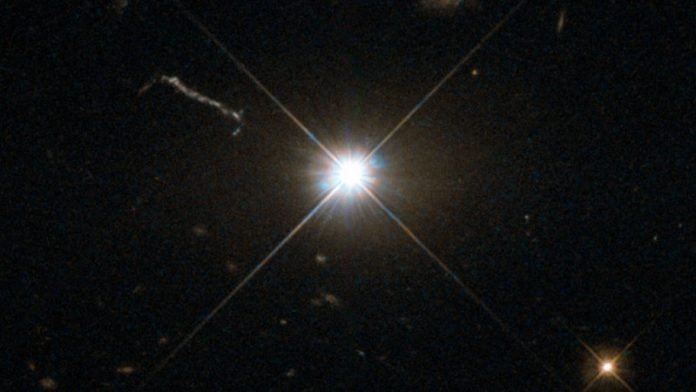
We now know just how massive the fastest-growing black hole in the Universe actually is, as well as how much it eats, thanks to new research led by The Australian National University (ANU).
It is 34 billion times the mass of our sun and gorges on nearly the equivalent of one sun every day, according to Dr Christopher Onken and his colleagues.
“The black hole’s mass is also about 8,000 times bigger than the black hole in the centre of the Milky Way,” Dr Onken said.
“If the Milky Way’s black hole wanted to grow that fat, it would have to swallow two thirds of all the stars in our Galaxy.”
This giant black hole – known as J2157 – was discovered by the same research team in 2018.
“We’re seeing it at a time when the universe was only 1.2 billion years old, less than 10 per cent of its current age,” Dr Onken said.
“It’s the biggest black hole that’s been weighed in this early period of the Universe.”
Exactly how black holes grew so big so early in the life-span of the Universe is still a mystery, but the team is now searching for more black holes in the hope they might provide some clues.
“We knew we were onto a very massive black hole when we realised its fast growth rate,” said team member Dr Fuyan Bian, a staff astronomer at the European Southern Observatory (ESO).
“How much black holes can swallow depends on how much mass they already have.
“So, for this one to be devouring matter at such a high rate, we thought it could become a new record holder. And now we know.”
The team, including researchers from the University of Arizona, used ESO’s Very Large Telescope in Chile to accurately measure the black hole’s mass.
“With such an enormous black hole, we’re also excited to see what we can learn about the galaxy in which it’s growing,” Dr Onken said.
“Is this galaxy one of the behemoths of the early Universe, or did the black hole just swallow up an extraordinary amount of its surroundings? We’ll have to keep digging to figure that out.”
The research has been published in Monthly Notices of the Royal Astronomical Society.



